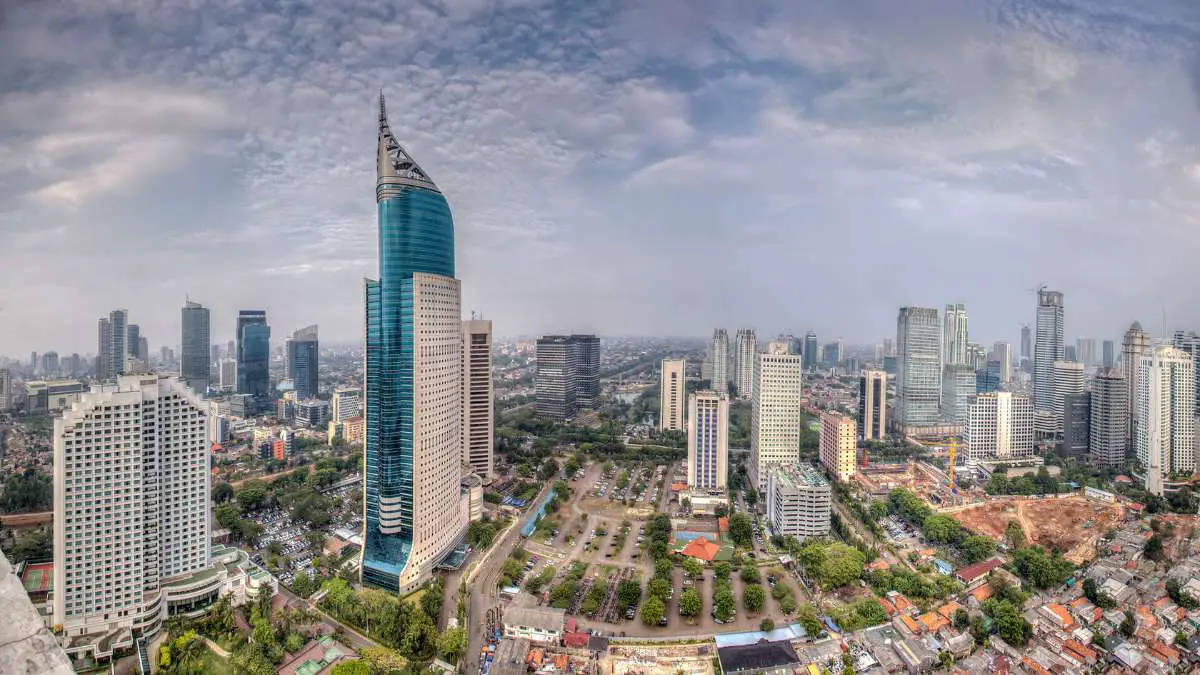Table of Contents
- Introduction
- A Nation of Readers, Slowly But Surely
- Print is Not Dead—Yet
- The Digital Publishing Landscape
- Audiobooks and Podcasting: The New Listening Culture
- Independent Publishers and the Rise of Niche Content
- Translation, Rights, and International Reach
- Education Publishing and Government Tender Dependency
- Book Distribution and the E-Commerce Revolution
- Challenges and Structural Limitations
- Looking Ahead: Opportunities in 2025 and Beyond
- Conclusion
Introduction
Indonesia’s publishing industry has entered 2025 on a wave of transformation. The world’s fourth-most populous nation, with over 275 million people, rapidly evolves from a print-dominated market into a diversified ecosystem that embraces digital innovation, local voices, and regional ambitions. While long-standing structural challenges remain, including distribution bottlenecks, uneven literacy levels, and pricing sensitivity, the sector also sees unprecedented dynamism. This is thanks to a growing middle-class readership, digital penetration, a young and tech-savvy population, and supportive cultural policies.
This write-up assesses Indonesia’s publishing industry in 2025, highlighting emerging trends, key players, digital growth, challenges, and what lies ahead. Whether you’re in the book trade, publishing policy, or just keeping tabs on one of Southeast Asia’s most vibrant creative economies, this deep dive offers a comprehensive look into what makes the Indonesian publishing market tick today.
A Nation of Readers, Slowly But Surely
Indonesia has historically struggled with relatively low literacy levels across its archipelago, a legacy of uneven access to quality education and reading materials. However, the country has made significant strides in recent years. Government programs such as Gerakan Literasi Nasional (National Literacy Movement) and the Merdeka Belajar (Freedom to Learn) campaign have aimed to build a stronger culture of reading, particularly among students and in rural areas.
As of 2025, book reading is still not the dominant leisure activity across all segments, but younger Indonesians are increasingly turning to literature, self-help, and web novels. The democratization of content via mobile platforms and social media has introduced millions of Indonesians to bite-sized, serialized stories and audiobooks, many originally published by local authors. This growing reader base, particularly among urban Gen Z and millennials, is shaping the direction of what kinds of books get published and how they are marketed.
Print is Not Dead—Yet
Despite all the buzz around digital transformation, print still dominates Indonesia’s publishing revenues. Over 75% of the market is still based on printed books. Educational publishing remains the most lucrative and stable segment, primarily driven by government textbook procurement and schoolbook sales. Trade books, including fiction and non-fiction titles, are seeing modest growth but remain a smaller slice of the pie.
Major traditional publishers like Gramedia Pustaka Utama, Elex Media Komputindo, Mizan, and Bentang Pustaka continue to invest heavily in print runs and bookstore distribution. Gramedia, the largest player, also operates the country’s most extensive bookstore network and benefits from vertical integration. However, many smaller publishers find the cost of printing and distributing physical books increasingly burdensome, especially in outer island regions where logistical costs can be punishing.
At the same time, independent bookstores are enjoying a slow resurgence in urban areas. Indie publishers and small press operations are forming community-based alliances, often selling directly via Instagram, Tokopedia, or at literary events and pop-up bazaars. This hybrid publishing model, supported by direct-to-consumer digital channels, is resilient.
The Digital Publishing Landscape
The digital publishing market in Indonesia has become far more dynamic in 2025. Ebooks, once an afterthought in publishing strategies, are now seen as an essential part of the business. This shift is not purely consumer-driven—publishers themselves are proactively exploring digital-first strategies to reduce costs and extend reach.
Platforms like Google Play Books and Gramedia Digital continue to lead the way, but newer Indonesian-born platforms are challenging their dominance. Applications like Cabaca, Ipusnas (Indonesia’s national digital library), and Kwikku have cultivated significant user bases through mobile-first storytelling and serialized content formats. These platforms often incorporate gamification and reward systems, making them especially appealing to young readers.
Web novels and user-generated content also continue to rise, with Wattpad, Storial, and Joylada sustaining strong communities. For some writers, these platforms have served as a springboard to traditional publishing deals or adaptations into film and television.
That said, monetization remains a major challenge. Many Indonesian readers still expect digital content to be free or extremely cheap. Subscription models are growing but often lack profitability. The path to a sustainable digital publishing ecosystem will likely depend on improved payment infrastructure, more vigorous copyright enforcement, and more creative content bundling with other digital services.
Audiobooks and Podcasting: The New Listening Culture
A fast-growing segment of the digital publishing scene is audio content. Audiobooks are finally gaining traction in Indonesia, albeit slowly. Pioneers like Storytel, Audible (in partnership with local publishers), and Gramedia Audio have started to make audiobooks more accessible. Educational content, motivational talks, and Islamic knowledge are among the most consumed categories in this format.
Expanding podcasting also contributes to a broader “listening culture” in the country. Many Indonesian authors now host or appear on podcasts to promote their books, build audiences, and maintain relevance in a noisy digital landscape. In a traffic-heavy nation like Indonesia, where people spend hours commuting, audio formats offer a natural alternative to traditional reading.
Still, publishers are cautious. The production cost of audiobooks remains high relative to demand. Piracy and file-sharing further complicate matters. As a result, most audiobook ventures are currently bundled with other digital services or supported by corporate sponsors.
Independent Publishers and the Rise of Niche Content
2025 has been a good year for independent publishers in Indonesia. While they face enormous competition from big players, indies are finding success by focusing on niche markets and underrepresented voices. Ethnic minority narratives, feminist nonfiction, and regional languages are gaining visibility thanks to passionate micro-publishers.
These publishers often operate without a traditional distribution network. Instead, they rely on strong branding, loyal social media followings, and crowdfunding to support book projects. Platforms like Karyakarsa allow readers to directly fund new titles, giving creators a much-needed revenue stream without waiting for bookstore placement.
Translation, Rights, and International Reach
Indonesia’s role in the global publishing ecosystem remains relatively limited, but efforts to internationalize are growing. The government’s support of the Translation Subsidy Program has helped selected Indonesian titles get translated into English, Arabic, Japanese, and Korean. Literary agencies like Borobudur Agency and Lontar Foundation are working hard to bridge the gap between local authors and international publishers.
Some breakout successes—like Eka Kurniawan’s internationally acclaimed novels or Andrea Hirata’s Laskar Pelangi—have given the global market a taste of Indonesia’s literary potential. However, most publishers are still not fluent in international rights negotiation or metadata standards, which limits their discoverability and deal-making capacity.
The Indonesia International Book Fair is expected to continue drawing crowds and more foreign rights buyers. Rights catalogues are being digitized and published in multiple languages. There’s a growing recognition that the export of Indonesian stories is not just a cultural goal—it’s a commercial opportunity.
Education Publishing and Government Tender Dependency
One of the largest segments of the Indonesian publishing market remains educational publishing. As of 2025, it accounts for more than half of all book revenues in the country. However, the market is heavily dependent on government tenders for textbook procurement, particularly those linked to the Ministry of Education’s initiatives.
This reliance has created a boom-or-bust cycle for many publishers, especially those without diversified revenue streams. When tenders are delayed or budgets are reallocated, entire publishing calendars are thrown into disarray. Additionally, competition for these tenders is fierce, often encouraging publishers to prioritize compliance and volume over creativity and pedagogical innovation.
Nonetheless, edtech is disrupting the scene. Companies like Ruangguru, Zenius, and Quipper are introducing new digital learning platforms that challenge the role of traditional educational books. Publishers are now being forced to consider how to create multimedia-rich educational content, which blends textbooks with video, interactivity, and learning analytics. The integration of AI into these platforms also raises questions about the future relevance of conventional textbook publishing.
Book Distribution and the E-Commerce Revolution
Indonesia’s geographic sprawl—more than 17,000 islands—has always made distribution a nightmare. Physical books are expensive to ship, especially to eastern regions like Papua and Maluku. In the past, this limited publishers’ reach to Java and parts of Sumatra.
However, e-commerce has dramatically reshaped the distribution model. Online bookstores like Tokopedia, Shopee, and Bukalapak now handle a growing share of book sales. Publishers bypass traditional retail chains and sell directly to consumers through official stores on these platforms. Print-on-demand services are also beginning to take hold, allowing for low-inventory risk and faster delivery.

Though costs remain high, courier services like J&T, SiCepat, and AnterAja have improved logistics to second-tier cities. Some publishers have started working with hyperlocal logistics providers or setting up micro-warehousing in strategic regions to reduce delivery times.
Still, returns and damaged stock remain a pain point. There’s room for innovation in creating more resilient, eco-friendly packaging and smarter inventory management systems tailored to the realities of Indonesia’s topography.
Challenges and Structural Limitations
Despite the progress, the Indonesian publishing market continues to face significant challenges. Piracy remains rampant, both in the form of photocopied textbooks and unauthorized PDF sharing. Enforcement of intellectual property laws is inconsistent, and many consumers still don’t see piracy as morally problematic.
Another limitation is the low purchasing power outside urban centers. A single book can cost 2–3% of a low-income household’s monthly income. As a result, price-sensitive segments either rely on used books, borrow from friends, or turn to free digital content, legal or otherwise.
Lastly, professional development for publishers is still underdeveloped. Training programs are lacking in areas such as digital marketing, rights negotiation, book design, and production workflows. Industry associations are stepping up, but more public-private partnerships will be needed to create a skilled and adaptive workforce in publishing.
Looking Ahead: Opportunities in 2025 and Beyond
Looking forward, Indonesia’s publishing industry is at an inflection point. While many of its challenges are systemic, there are also abundant opportunities. The continued rise of digital platforms, the growth of indie publishing, and the increasing appetite for local stories make this a market to watch.
Artificial intelligence and machine learning are beginning to enter content production and recommendation engines. Some startups are experimenting with AI-assisted editing, personalized reading apps, and automated narration for audiobooks. While these technologies are still nascent, they promise to make Indonesian publishing more efficient and globally competitive.
International collaborations, including Southeast Asian rights exchanges and translation networks, could also help position Indonesia as a regional publishing hub. With the right policies, talent development, and infrastructure investments, the country could evolve from being an import-heavy market to one that confidently exports its rich literary and intellectual capital.
Conclusion
The Indonesian publishing market in 2025 is a compelling blend of persistence and disruption. While print remains dominant and structural limitations persist, the energy in digital publishing, audio, and independent content creation is unmistakable. It’s a market that defies simple narratives: it’s not quite mature, not quite emerging, but constantly reinventing itself in ways that are distinctively Indonesian.
For publishers, writers, investors, and policymakers, the message is clear: adapt fast, stay connected, and think beyond the book. Indonesia’s publishing future is as vast and diverse as its archipelago—and it’s only just beginning to find its voice on the global stage.
